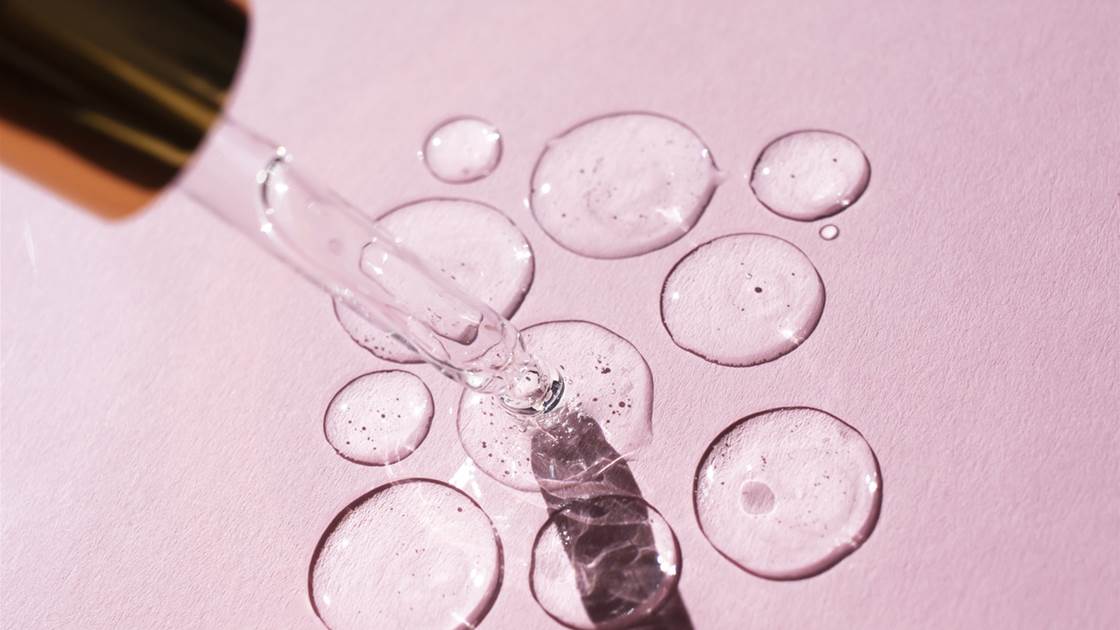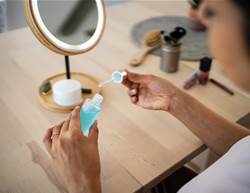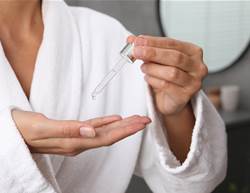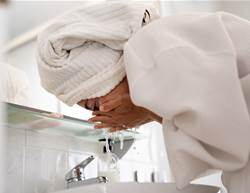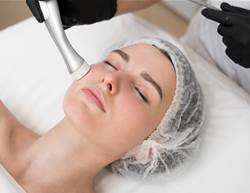Grab your skincare stash and take a look at the labels. You’re probably seeing a lot of words that end in ‘-ic’ (glycolic, hyaluronic, ferulic, linoleic). All those ingredients essentially mean ‘acid’. But each type serves a very different purpose – some brighten, others hydrate, some even strengthen your skin barrier. Here, we want to talk about the exfoliating kind, which, when used properly, induce a radiant glow, and when not used correctly, are a complexion nightmare. Don’t worry – we’ll get you sorted.
The 3 Main Types of Exfoliating Acids
1 AHAs (ALPHA HYDROXY ACIDS)
These tackle everything from fine lines to dark spots by exfoliating the top layer of your skin, says dermatologist Dr Elyse Love. There are a bunch of AHAs out there, but these are the five that should be on your radar.
Glycolic acid
Its molecules are teeny-tiny, so it can easily penetrate the skin. Translation: it really gets in there to loosen the glue that holds dead skin cells together, minimise the look of pores, smooth fine lines and fade hyperpigmentation. (PS: it can also separately boost collagen production.)
Lactic acid
A bit gentler than glycolic acid with some hydrating abilities, this is a great option for people with dry skin. And it’s a go-to for those wanting to smooth rough, uneven texture.
Tartaric acid
Its larger molecules are perfect for sensitive skin, and its antioxidant properties can help protect against the damaging effects of pollution and blue light.
Mandelic acid
Another solid option for sensitive types, it penetrates skin slowly to minimise irritation. Its superpowers include fading discolouration (such as acne marks) and having antibacterial and anti-inflammatory properties.
Malic acid
A great supporting ingredient that plays nicely with other acids, it exfoliates gently while drawing moisture to your skin.
2 BHAs (BETA HYDROXY ACIDS)
The big one here is salicylic acid, says Dr Love. It’s a great exfoliator and exceptionally good at dissolving stubborn oil and other build-up in pores, making it a gem for treating breakouts. It can even help curb oil production and reduce inflammation, which is why you see it in just about every acne product ever.
3 PHAs (POLYHYDROXY ACIDS)
Also known as the gentlest of them all. “PHAs are great for those who want the brightening and smoothing effects of an AHA, but haven’t been able to tolerate one,” explains Dr Love. They can be used as a daily exfoliator and can help boost the effectiveness of other skincare ingredients, too.
How to Use Them Properly:
✘ DON’T GO ALL OUT
Acids come in varying percentages, but you don’t want to reach for the strongest one right off the bat. “Start low and slow, then work your way up to a higher concentration,” says Dr Love.
✘ DON’T SKIP SPF
This stuff can make your skin photosensitive, or more prone to sunburn and UV damage, so don’t forget to apply and reapply an SPF50 as the last step in your morning routine.
✓ DO TRY SHORT-CONTACT ACIDS
Opting for an acid product that stays on your skin for a few minutes and is then rinsed off (like a cleanser or toner) is an easy way to minimise irritation if you have sensitive skin.
The Best Ones to Use at Home
Just because you can find acids in everything from face washes to moisturisers doesn’t mean you should add them to every step of your routine, says Dr Love. “Pick one acid-based product – overdoing it will destroy your skin barrier and cause inflammation, redness and flakiness – and keep the rest of your routine simple.”
Try these 3:
DERMALOGICA MULTIVITAMIN THERMAFOLIANT This exfoliator contains lactic and salicylic acids and retinol, along with antioxidants to even skin tone.
MURAD DAILY CLARIFYING PEEL A multi-action peel containing AHA (glycolic acid), BHA (salicylic acid) and retinoid that improves the look of pores.
MEDIK8 SURFACE RADIANCE CLEANSE This exfoliating face wash contains AHAs and BHAs to resurface and slough away dead skin cells.
This article originally appeared in the October 2021 issue of Cosmopolitan USA.
